The recent 15 percent decline in value in the Australian dollar has impacted on some imported, currency-exposed beef production inputs, but the trend is far from universal.
Inputs like diesel fuel were the first to respond, lifting to two-year highs recently, but other cattle inputs like imported animal health products and imported phosphorus and urea sources used in the manufacture of stockfeed supplements are yet to show any appreciable price rise.
While it has rallied a little in recent days, the A$ hit a three-year low against the US$ on August 8, falling to US88.48c, or more than 14pc below its January high of US105.99c. Against the earlier July 2011 record-high of close to US111c, the fall in currency value has been close to 20pc.
 While that’s good for Australian beef exports, it also impacts negatively on any goods and services imported from overseas, or those manufactured in Australia using imported materials or ingredients.
While that’s good for Australian beef exports, it also impacts negatively on any goods and services imported from overseas, or those manufactured in Australia using imported materials or ingredients.
MLA chief analyst Tim McRae said currency value was always a factor in pricing on any imported goods used in the industry, but it might be difficult to see any clear evidence of the impact at farm level this year because producers were extremely cautious about spending, given the season in most major cattle producing regions and its impact on cattle prices.
“The fact that some currency-exposed items might become more expensive might not have a major impact, because many producers are limiting expenditure this year to the bare essentials,” Mr McRae said.
Additionally, recent price rises in some cattle supplement products was probably due more to extreme high demand on some ingredients caused by drought, rather than any currency movement.
Beef Central has ‘shopped around’ this week to find out where the currency impacts are being seen, and how significant they are. Here’s a diverse range of currency-exposed products commonly seen within the beef supply chain as examples:
Diesel:
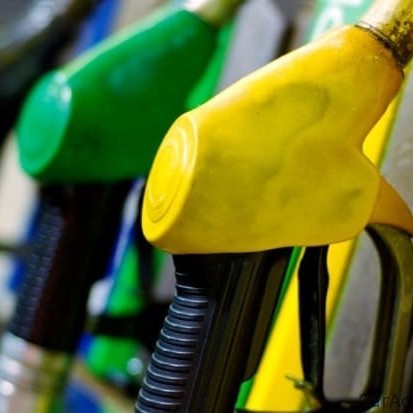 As reported recently in Beef Central’s regular monthly diesel price report, regional pump prices have hit 160c/litre last week, a three-year high, and up about 12c/litre since late June. Australia is only about 40pc self-sufficient in transport fuels, meaning international market trends and currency movements have a direct impact on local pricing. Currency movements are often reflected within days in diesel and petrol price trends.
As reported recently in Beef Central’s regular monthly diesel price report, regional pump prices have hit 160c/litre last week, a three-year high, and up about 12c/litre since late June. Australia is only about 40pc self-sufficient in transport fuels, meaning international market trends and currency movements have a direct impact on local pricing. Currency movements are often reflected within days in diesel and petrol price trends.
Roto-Mix feedlot mixers
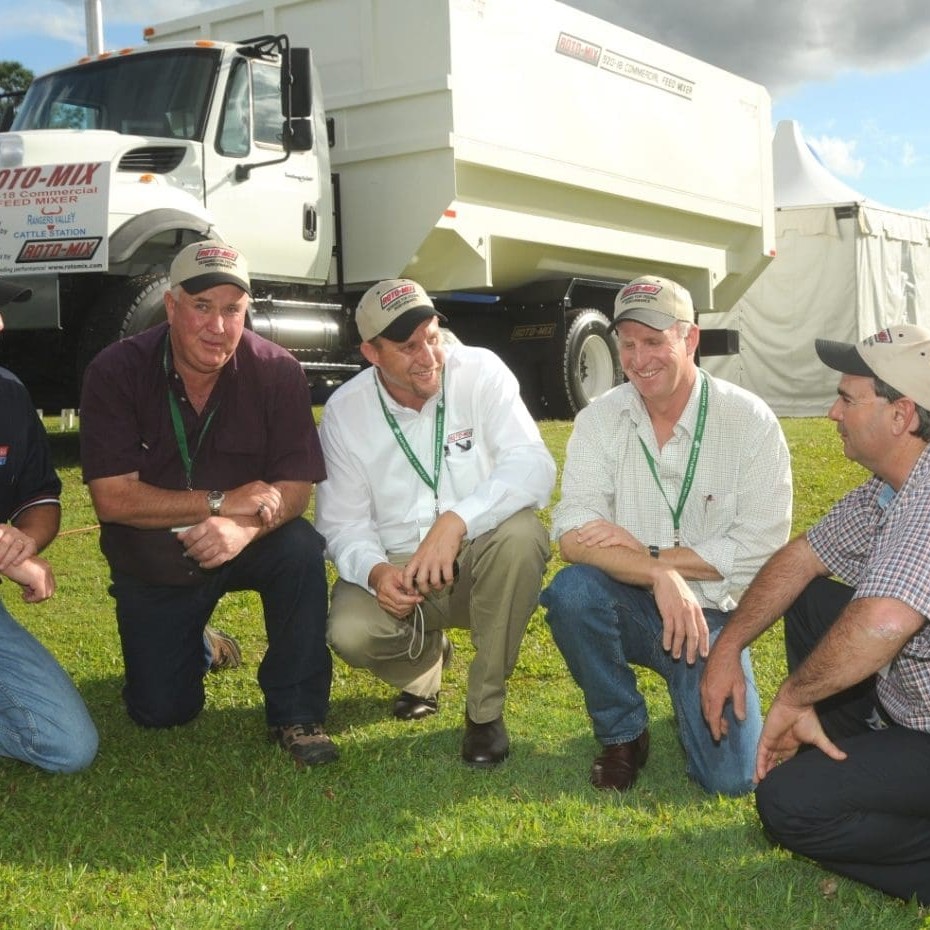 Fully-imported from the US, the Roto-Mix feedlot ration mixers are widely regarded as the best in the market for large-scale feedlot operations. Their price landed in Australia has risen by about 10pc recently due to currency, local import and distributor, Stuart Judd, from Judd Bros told Beef Central.
Fully-imported from the US, the Roto-Mix feedlot ration mixers are widely regarded as the best in the market for large-scale feedlot operations. Their price landed in Australia has risen by about 10pc recently due to currency, local import and distributor, Stuart Judd, from Judd Bros told Beef Central.
“But it has not really impacted on our sales, because clients have just done a capital investment budget for a new machine and that can often take 12 months to go through the system,” he said.
“They’ve put the order in anyway, because it’s exactly what they want to do the job. But even so, it is certainly making it more expensive for them. For the feedlot industry’s perspective, I don’t think the currency impact will make a big difference: they either want it or they don’t.”
“But we’d like to think that eventually, cattle pricing starts to reflect the positive impact that currency movement has had on the income received for Australian beef in international markets. Higher cattle prices would more than offset any negative impact on price-tags for imported products and machinery used in the industry,” Mr Judd said.
As a guide, a large truck-mounted Roto-Mix machine (29cu m capacity) has gone from $270,000 to about $300,000 in price as a result of the currency movement. A large southeast Queensland feedlot, which asked not to be identified, has recently taken delivery of one of the units, saying “it had been in the budget for 12 months, and we just have to ‘accept’ the price rise.”
“While feedlots are busy, they’re still not making a lot of money, but hopefully the worst is behind them,” Mr Judd said.
Daniels cattle crushes, hydraulic alleys and stock handling gear
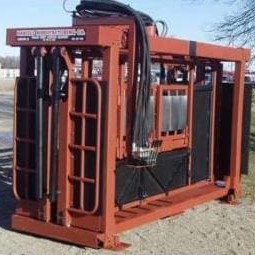 Also manufactured in the US and full-imported, the Daniels Manufacturing Co range of heavy-duty cattle crushes, hydraulic alleys and yards/handling equipment has increased in price in concert with the recent currency movement.
Also manufactured in the US and full-imported, the Daniels Manufacturing Co range of heavy-duty cattle crushes, hydraulic alleys and yards/handling equipment has increased in price in concert with the recent currency movement.
Importer and distributor Bruce Severin, from Feedlot Machinery & Equipment, said orders did not appear to be backing-off, however, despite the 10-15pc rise due to currency over the past 12 months.
“Often it’s exactly the type of crush a feedlot wants, so price is not the primary consideration. It’s just a matter of going through the process in terms of how they do their capital expenditure.”
Mr Severin said two years ago when the A$ was close to US110c, imported machinery was “as cheap as I have ever seen it,” but the feedlot sector at that point was in a very difficult financial position, and nobody had any money to take advantage of the situation to buy new equipment.
However he said his business could see some impact from larger cattle producers in areas like Central Queensland, that were in the market for smaller crushes and handling equipment, which might be harder hit by price adjustments during a year when their income was under challenge.
Following similar logic to Roto-Mix’s Stuart Judd, he has faith in impact that increased competitiveness of Australian beef in the international marketplace will have on livestock pricing, and the prospect of that flowing-back, to some extent, into producers’ pockets.
Animal health, nutrition products:
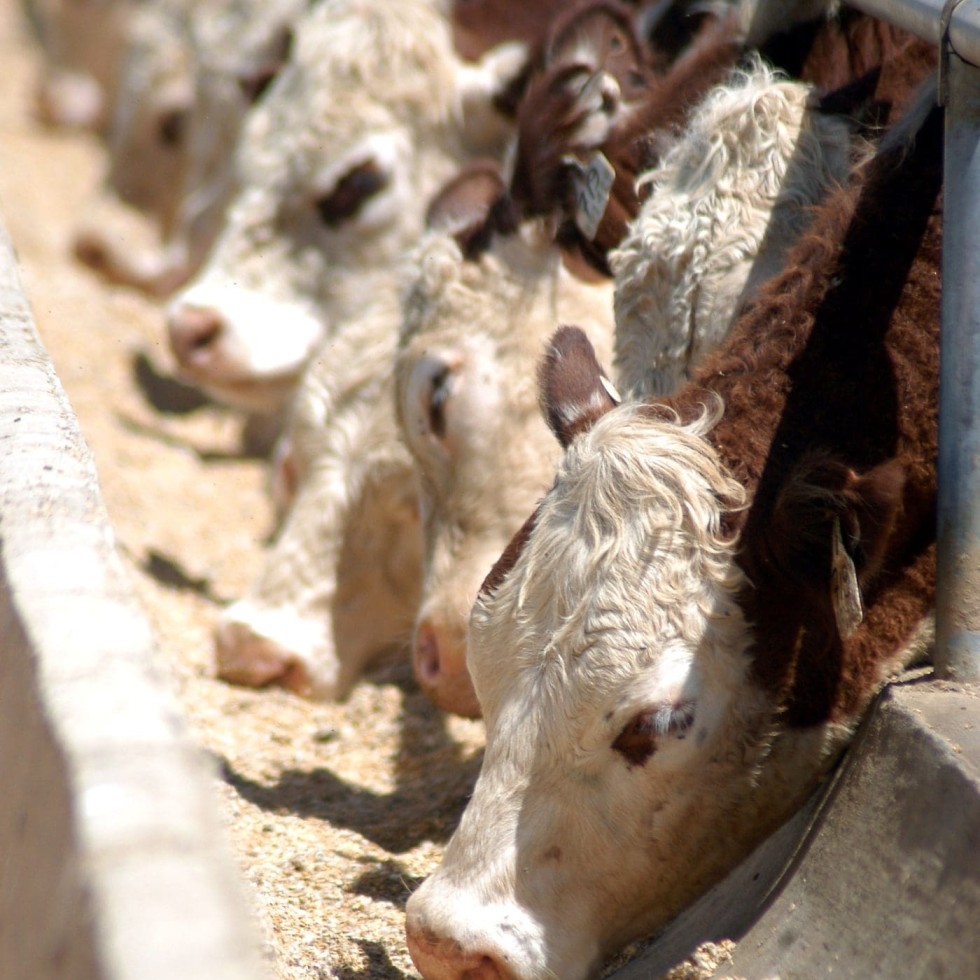 Consultant feedlot nutritionist and veterinarian, Dr Rob Lawrence, said he had seen no sign yet of imported animal health products, feed additives or medications increasing in price.
Consultant feedlot nutritionist and veterinarian, Dr Rob Lawrence, said he had seen no sign yet of imported animal health products, feed additives or medications increasing in price.
“None of the major suppliers have yet issued any advices over currency-driven price increases,” he said.
“Stockpiling of products imported earlier at easier exchange rates may have contributed to that. It may take a while to work through the system.”
“And some of the imported products used in feedlot rations, such as ionophores are used in very small quantities. Rumen modifiers, costing at 1.2c/kg of ration, could go up by 50pc in price without having any appreciable impact on ration cost.”
A large animal health company contacted by Beef Central said it normally looked at its landed costs on an annual basis and hedged the A$ at a budgeted rate. It planned to reassess current pricing in November, but conceded that it was ‘inevitable’ that products from overseas would appreciate in A$ terms by +10pc if they come from the US, and even China.
Even some locally manufactured animal health products could be impacted by imported raw material costs.
Stock supplement ingredients
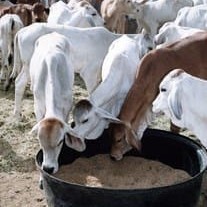 Large northern loose lick manufacturer Causeway Produce is yet to see any significant impact on pricing in imported ration ingredients.
Large northern loose lick manufacturer Causeway Produce is yet to see any significant impact on pricing in imported ration ingredients.
“I just ordered a thousand tonne of an ingredient from overseas, and the price was basically the same as last time,” Causeway’s Peter McHugh said.
“We anticipate the dollar will have some effect on pricing, but it is not really evident yet,” he said.
“If anything, high demand caused driven by the drought has driven-up prices – not the currency factor. We have a heap of palm kernel and copra meal coming in from overseas, and the drought demand has dragged those prices up – not the A$. We just can’t get enough of it, and there’s some hold-ups on delivery, due to spot selling on a rising market.”
Imported meals had risen at least $100/tonne, due to that demand pressure, Mr McHugh said.
“Some ingredients, like urea, have actually got cheaper in price. But given what’s happened this year in northern and western Queensland, producers will not be in any position to be able to afford to buy lick, if the ingredient prices go up.”
Direct imports growing
 Mort & Co’s client services manager Ben Maher said a trend he had noted as prices had risen on imported goods was direct purchase from overseas manufacturers, rather than going through local dealerships.
Mort & Co’s client services manager Ben Maher said a trend he had noted as prices had risen on imported goods was direct purchase from overseas manufacturers, rather than going through local dealerships.
“I’ve noted comments from some of our feedlot clients who are buying all sorts of things, even pumps and motors online, and importing them themselves out of the US or China,” Mr Maher said.
“The currency impact is probably part of that. A couple of guys have said they can buy two motors out of China for the same price as one good one in Australia, and leave the second one on the shelf as a back-up.”
Mr Maher said the direct imports had included second-hand graders, bobcats and scrapers for station work, often ex-mining, earthmoving and industrial equipment out of the US.
“A couple of the big pastoral companies have been doing it, with success,” he said.



HAVE YOUR SAY